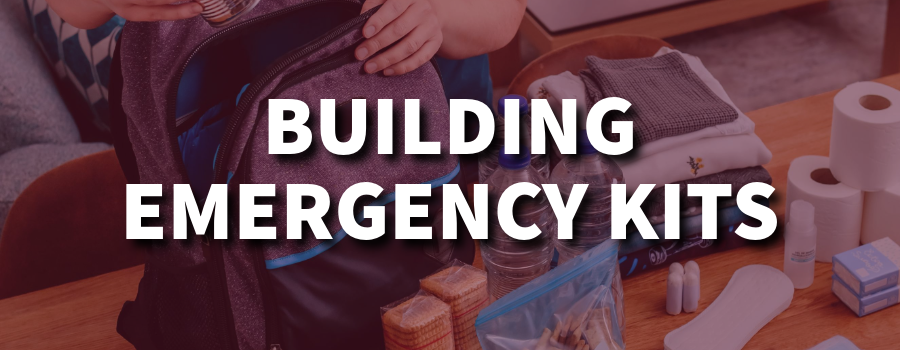Building an Emergency Kit

When disaster strikes, being prepared can truly make all the difference. In Idaho, where our risks include everything from wildfires and severe winter weather to earthquakes, having a well-stocked emergency kit can be crucial in how you and your household handle unexpected situations. It’s not only about getting through the immediate crisis but also about staying comfortable, clean, fed, and healthy in the aftermath.
The Idaho Office of Emergency Management (IOEM) encourages all Idahoans to gather essential supplies and keep them in one to two easy-to-carry emergency kit(s), ready for use at home or for quick evacuation in any type of emergency or disaster.
Basics Supplies
- Water (one gallon per person per day for several days, for drinking and sanitation)
- Food (at least a several-day supply of non-perishable food)
- Battery-powered or hand crank radio and a NOAA Weather Radio with tone alert
- Flashlight
- First aid kit
- Extra batteries
- Complete change of clothing appropriate for your climate and sturdy shoes for each person in your home
- Whistle (to signal for help)
- Dust mask (to help filter contaminated air)
- Plastic sheeting, scissors and duct tape (to shelter in place)
- Moist towelettes, garbage bags and plastic ties (for personal sanitation)
- Manual can opener (for food)
- Local maps
- Cell phone with portable chargers and a backup battery
Additional Emergency Supplies
Consider adding the following items to your emergency supply kit based on your own specific, individual needs:
- Soap, hand sanitizer and disinfecting wipes to disinfect surfaces
- Prescription medications. About half of all Americans take a prescription medicine every day. An emergency can make it difficult for them to refill their prescription or to find an open pharmacy. Organize and protect your prescriptions, over-the-counter drugs, and vitamins to prepare for an emergency.
- Non-prescription medications such as pain relievers, anti-diarrhea medication, antacids or laxatives
- Prescription eyeglasses and contact lens solution
- Infant formula, bottles, diapers, wipes and diaper rash cream
- Pet food and extra water for your pet
- Cash or traveler’s checks
- Important family documents such as copies of insurance policies, identification and bank account records saved electronically or in a waterproof, portable container
- Printed copies of important phone numbers for community resources or local emergency contacts (like the nearest shelter or emergency services)
- Sleeping bag or warm blanket for each person
- Fire extinguisher
- Matches in a waterproof container
- Feminine supplies and personal hygiene items
- Mess kits, paper cups, plates, paper towels and plastic utensils
- Paper and pencil
- Books, games, puzzles or other activities for children
Maintaining Your Kit
After assembling your kit remember to maintain it so it’s ready when needed:
- Keep canned food in a cool, dry place.
- Store boxed food in tightly closed plastic or metal containers.
- Replace expired items as needed.
- Re-think your needs every year and update your kit as your family’s needs change.
Kit Storage Locations
Since you do not know always know where you may be when an emergency happens, prepare supplies for home, work, and cars.
- Home: Keep this kit in a designated place and have it ready in case you have to leave your home quickly. Make sure all family members know where the kit is kept.
- Work: Be prepared to shelter at work for at least 24 hours. Your work kit should include food, water and other necessities like medicines, as well as comfortable walking shoes, stored in a “grab and go” case.
- Car: In case you are stranded, keep a kit of emergency supplies in your car.
Assembling an emergency kit is a key step in making sure your and your family are prepared for any situation. Take the time now to build your kit and revisit it regularly to make sure it meets the evolving needs of your family. You’ll be better equipped to protect what matters most when it counts.
For additional information to create an emergency kit, check out some of these resources:

